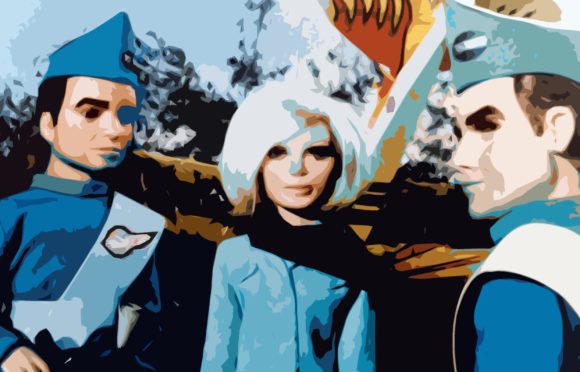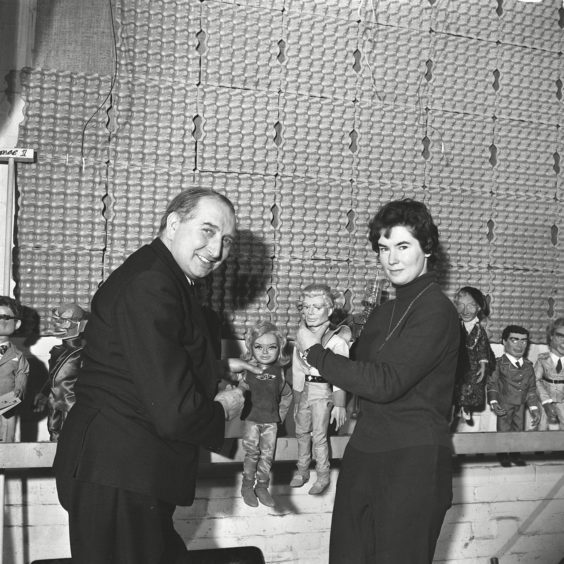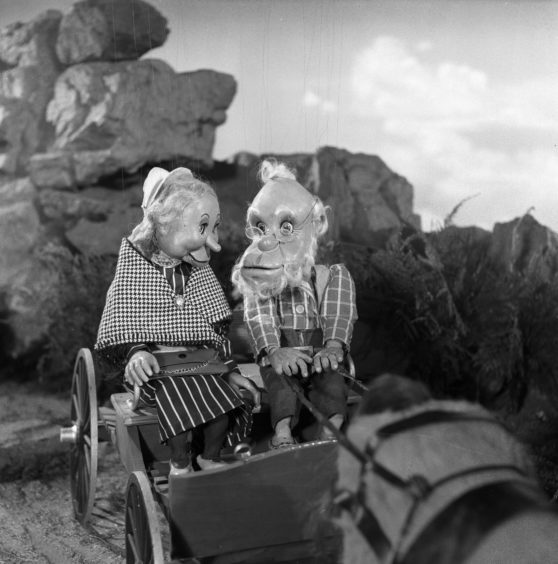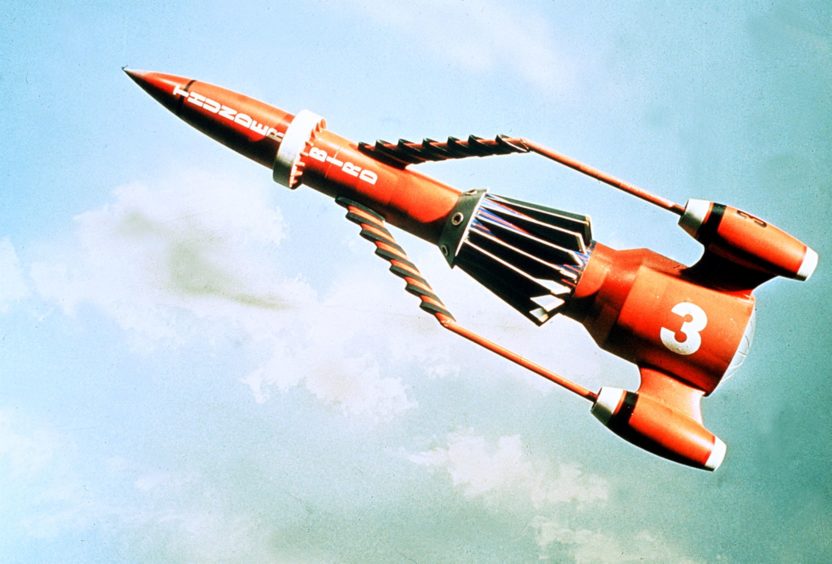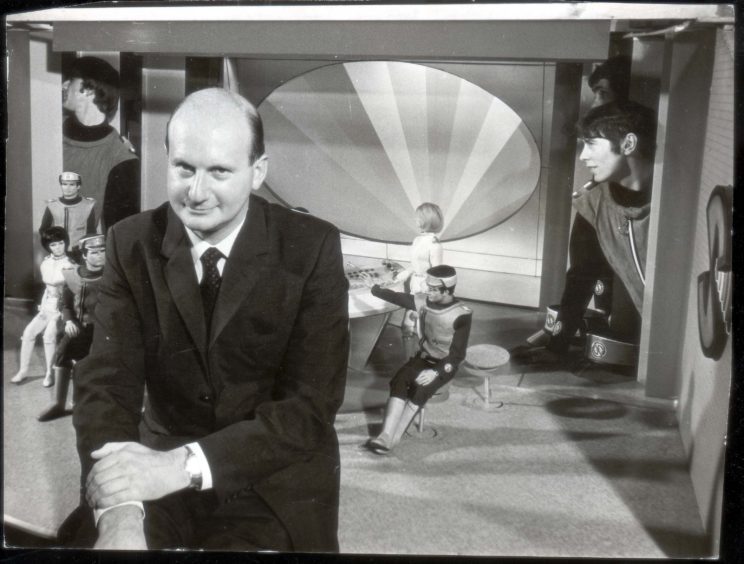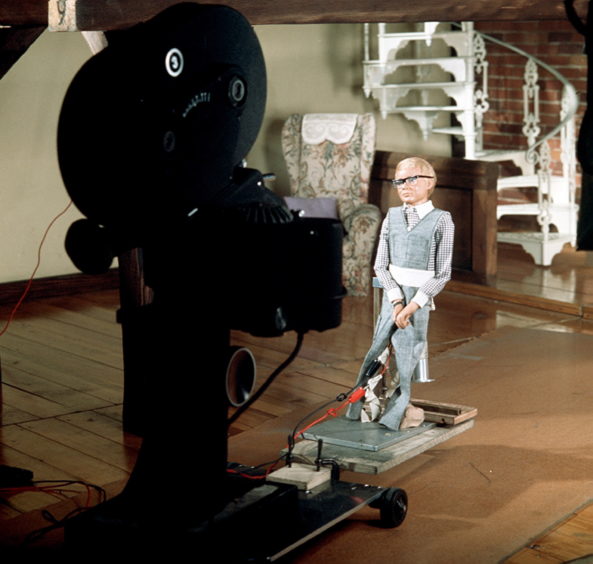Ah, you can’t put a price on treasured childhood memories can you? Well, actually you can. About £80,000 in fact.
That’s what Mary Turner was told her collection of original Captain Scarlet puppets, along with Lady Penelope from Thunderbirds, would fetch at auction, when she turned up on the Antiques Roadshow recently. You can see the clip here.
She was part of Gerry Anderson’s production team keeping kids glued to their tellies back in the 60s with iconic programmes like Stingray, Thunderbirds and Captain Scarlet and she kept hold of the unwanted marionettes.
Mary deserves every penny of that valuation, not least for bringing a sense of wonder, excitement and adventure into my formative years.
I’m sure I’m not alone in needing just three seconds of the Century 21 Television Production’s ident – stirring strings and a golden dart plunging into the logo – to feel the giddy excitement of being a bairn again.
Have to say, though, I would have loved to be in at the pitch for creating these programmes billed as Supermarionation (Anderson had a showman’s grandiose ways of labelling things).
“It’s science-fiction adventure shows for kids, but with puppets. What do you mean the door’s over there? No, it’s not The Woodentops in space.”
Actually, one of the first outings for Anderson’s phenomenally successful creations was a western, Four Feather Falls, before he got all sci-fi with Supercar. Both before my time, which is saying something.
I half remember Fireball XL5, but think that’s more to do with the repeats they would show on telly during the summer holidays in what passed for kids’ TV in the day. Although I can still sing the theme song and, yes, I did wish I was a spaceman.
Thunderbird 2 should
no more be able to fly
than a George Foreman Grill.”
It was the Stingray era when I first became a true fan. Troy Tempest and his nuclear powered sub battling the evil Aquaphibians and their metal fish-shaped submarines. It was also at this point I was introduced to the world of TV merchandising.
I had a model Stingray that you could play with in the bath. It was the height of sophistication… you wound up a rubber band-powered propeller and watched it zoom haphazardly across the water for, oh, two seconds. Such excitement.
Then came Thunderbirds, the perfect match of children’s television and 60s zeitgeist. On screen, International Rescue saved people around the planet on a weekly basis with thrilling derrings-do.
That and a series of vehicles which simply defied the laws of physics and aerodynamics. Thunderbird 2 should no more be able to fly than a George Foreman Grill. But it was still cool when the palm trees folded back on the runway of Tracey Island.
In real life, the influence of Thunderbirds was everywhere, from ice lollies called Fab’s (F.A.B. was International Rescue’s call sign) to the first risque joke I heard, involving Parker and Lady Penelope’s wardrobe… “and never let me catch you wearing them again.” I got into serious trouble from Miss Tulloch who overheard me telling in the reading corner.
Being an Edinburgh lad, I bought into the urban myth that Thunderbirds 3 was modelled on the Scott Monument. Sharing the same name as Thunderbird 1 pilot, Scott, was cool. I even got a Thunderbirds cap and sash to wear when I was out playing with my mates. How I avoided a kicking on the streets of my council scheme was more unlikely than some of the Thunderbirds plots.
My interest in Thunderbirds waned when Captain Scarlet came on the scene – cue a wailing cat, gunshots on a darkened street, spooky drifting lights and the voice of the Mysterons.
It was a heady mix having an indestructible hero for a generation of boys before the vaguest notion of health and safety. This was in the days when you announced you were going out to play and no questions were asked about where, who with or what you were doing, other than “be back for your tea.”
Shouts of “I’m Captain Scarlet” would be followed by death-defying stunts to impress your mates. Which was how I ended up in A&E with concussion and a chipped ankle bone. It would appear landing on grass isn’t a safety net when taking a running jump off the top of a mate’s garden shed.
After the exploits of Spectrum versus the Mysterons, Gerry Anderson moved on to the young lad who become the World Intelligence Network’s youngest spy. This was thanks to his special hi-tech glasses that could instantly transfer the skills and talents of the world’s elite into his mind.
Each week on telly, the Most Special Agent went round saving the world. Each day in real life, every kid who wore specs went round being called Joe 90.
And that was the last big hurrah for Gerry Anderson and his puppet extravaganzas of the 60s.
He later moved into live action programmes like UFO and Space 1999 which, funnily enough, seemed even more wooden than the marionettes he loved.
But I still harbour an affection for the days when puppets saved the world – and kids from boredom. So there was a real frisson when Mary Turner showed up on telly the other night with Captain Scarlet, Lady P et al.
Memories of 50-odd years ago came flooding back. That and errant thought of how much my Stingray model would be worth these days…
